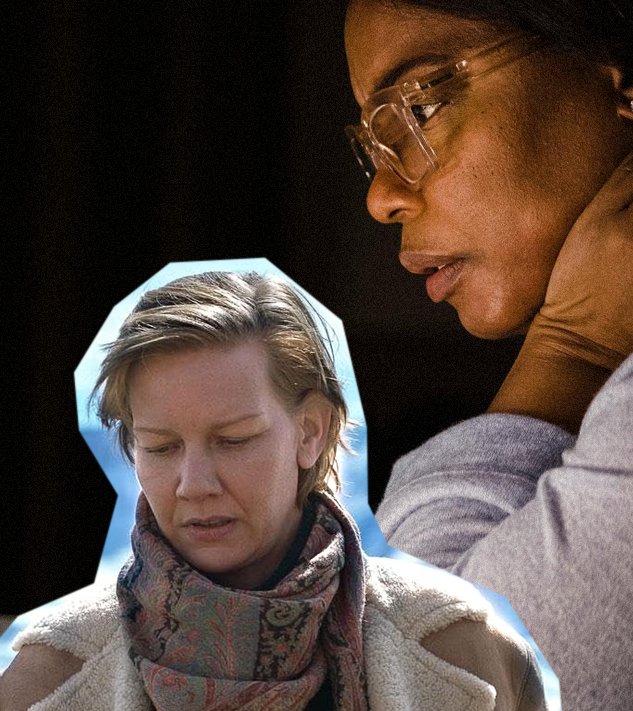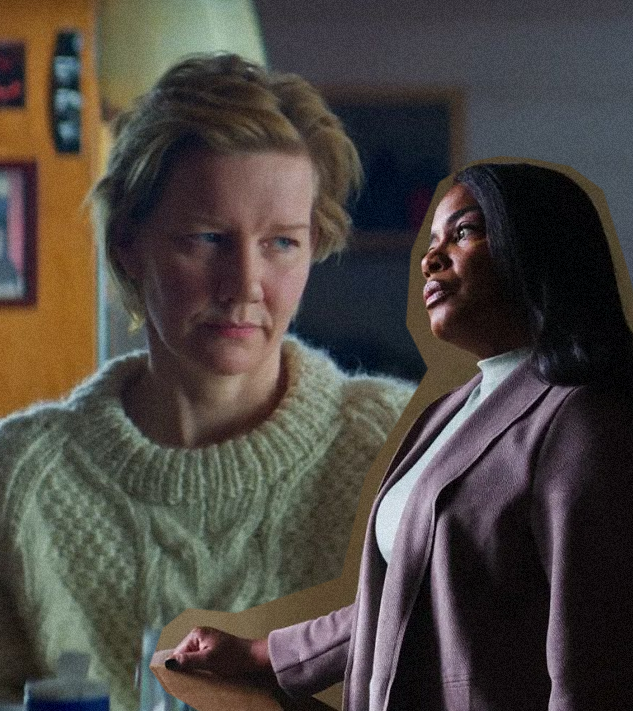The Anatomy of the Highly Ambitious Woman: Cinema’s Complex Relationship with Successful Females
Make it stand out
A fetch ball falls from the top floor and bounces austerely to the bottom of the stairs; an opening scene of symbolic foreshadowing from Justine Triet’s, Anatomy of a Fall, (2023) recently nominated for five Oscars, including Best Original Screenplay. Justine and her co-writer Arthur Harari, construct the narrative of a bisexual, multilingual, acclaimed writer who is accused of her husband’s death, and albeit she is put on trial hardly lawfully, to the point of fiction, what is actually on trial is her moral dignity as a free, powerful woman. More than just a courtroom drama, the act of falling is the central theme of this film, physically and allegorically, and perhaps “falling” has become the stereotypical, run-of-the-mill script of how women in positions of power are traditionally portrayed.
With the limiting number of films that place such a woman at the centre, we are offered the highly ambitious woman emblazoned with all of her idiosyncrasies as the basis of how she climbed the patriarchal ladder. Not only do we perceive this sculpted idea of a woman as near impossible, but we assume there is always something wrong with her.
To ascend the wall of white men in suits, she must be cold, hostile, “damaged goods'', battling an addiction, have lost touch with her femininity, or have no family or hobbies therefore she is destined for loneliness, unhappiness - her eventual fall from grace. At least such is the rendering commonly exhibited by prior Hollywood ages, by way of Myrtle Gordon from Opening Night (1977) played by Gena Rowlands, and the eponymous Mildred Pierce (1945) played by Joan Crawford, female portrayals crippled by the absence of their male counterparts, fueled by the claw towards success, but ending up in questioning conclusions. So we must ask ourselves, how do we perceive a successful woman on the screen and in real life?
___STEADY_PAYWALL___
This is a woman we question to exist has it all - she challenges and advances within the sphere of male-dominated industries leading to a highly regarded, financially secure career, all while holding together a family, and the integrity of a morally just, feminine, put-together aura. Can a woman possess gender ambivalent qualities gracefully? Susan Sontag confronts us with a solemn, conventional notion with this excerpt from On Women, “The ideal state proposed for women is docility. Most of what is cherished as typically ‘feminine’ is simply behaviour that is childish, immature, weak. To offer so low and demeaning a standard of fulfilment in itself constitutes oppression in an acute form - a sort of moral neocolonialism.”
Such a statement encompasses the notion of how the foundations of a patriarchal system has short-circuited the trajectories of a woman’s ascension within a society that demands her of masculine, capitalistic dues, in exchange for a stable income but a questioned morale.
In Anatomy of A Fall, Justine Triet constructs a counter argument to such earlier writings of women, and reverses the gender roles by placing a woman with “male-idenitified” values at the film’s centre. She is cocky, sleeps with women, has written novel after novel while her husband’s writing career has hardly taken off due to familial “feminine” duties. Sandra Voyter, played by Sandra Hüller, is the modernised “Marlene Dietrich character”, a solitary fatal woman, intellectual, with a strong sensuality and equally strong gender ambivalence. She is unapologetic for who she is. We do not see her fall, but the man, her husband, falls instead. He falls to his death from their home’s top floor presumably after a verbal fight. We do not find out for sure whether she actually killed her husband, but “that is not the point”, hints Sandra’s lawyer at the beginning of the film.
“The foundations of a patriarchal system has short-circuited the trajectories of a woman’s ascension within a society that demands her of masculine capitalistic dues.”
Challenging earlier notions of the “docile female victim”, Justine asserts that this subversion of gender roles will be questioned, and uses the courtroom as the stage to perform the conditioned, patriarchal view of balancing a woman's suffering and success, the withstanding of pressure forces between masculinity and femininity, and the moral quandaries of maintaining equality and reciprocity in a partnership. In the absence of the male, the court stands in as the male view, doubting the coherency of this woman’s integrity to find out why and how exactly she has overtaken the husband’s presumed gender role.
The aforementioned female protagonists hailing the screens of traditional American cinema, Myrtle Gordon and Mildred Pierce, had to reprogram themselves into learning the ways of providing and flourishing in absence of the male. We see Gena Rowlands’ character literally fall, drunkenly onto the stage to perform in the opening night of a highly anticipated play. An adored actress, but deeply disturbed by her ageing, singledom, and her role in a play entitled ‘The Second Woman’, she seeks reprieve by stifling herself with radical off-script tantrums and existential, spiritual exorcism.
“You are not a woman to me anymore. You’re a professional”, Myrtle’s on-screen lover and ex’s devastating punch reverberates in a similar tone to Mildred’s first husband’s lacklustre farewell, “I’m fed up, let’s see you get along without me for awhile”. To which Mildred does quite well, but not without throwing herself into an Olympian-like work ethic to become the owner of a restaurant business, chaining herself to a toxic obsession with providing a lavish lifestyle for her daughter who, just like the other male characters in the film, refuses to reciprocate her love.
We see Myrtle and Mildred anaesthetise themselves with their work to withstand the pressures of balancing feminine and masculine roles, but consequently falling into a psychotic loophole. Mildred losing her daughter to an act of murder and returning to her first husband, and Myrtle completing her art but in a vertiginous, drunken breakdown. Such storylines defined the essence of “she-can’t-win” pessimism that lurked behind theatre screens, and have haunted women who have entered or are pursuing to enter - a heavily gated matrix - the boardroom, the director’s chair, the stage.
The question of when we will see the “impossible” female archetype extended to women of colour may have been recently answered, signalling a shift, in Ava Duvernay’s Origin (2023). A black woman’s intellectual pursuit of an idea at the emotional and informative core of a film is incredibly rare, but boldly illuminated in Aunjanue Ellis-Taylor’s portrayal of Isabel Wilkerson, Pulitzer-winning author of ‘Caste: the Origins of our Discontent’. We watch Isabel as she turns grief, personal from loss of her close ones and public by way of Trayvon Martin’s murder, into intellectual drive towards concluding her thesis on the very system that has limited films like this to exist.
“A caste system is an artificial construction, a fixed and embedded ranking of human value that sets the presumed supremacy of one group against the presumed inferiority of other groups. It is the worn grooves of comforting routines and unthinking expectations, patterns of a social order that have been in place for so long that it looks like the natural order of things.” Isabel writes, and echoes the prejudiced mosaic baked into our society that has accepted all “isms”, restraining the daily lives of the oppressed and inevitably their stories to be told to a general audience.
Alongside these four female characters, we all stand on shaky ground, on the rumblings of a distant volcano, expected to explode either in self, in marriage, in career, but in devastating results regardless. But Anatomy and Origin have shown us that women can inhabit feminine and masculine qualities, positive and negative, and still land on her feet, for it is not without her moral fatalities handed to her by this system that she is able to transmute her pain into strength that will become an indelible part of her life’s arsenal. Her ambition should not be her admission of defeat. The norm projects the white male genius in intellectual pursuit, and women who attempt to follow suit fail. If we continue to see more films challenging this norm, discussing these deliberate issues at hand in which Anatomy and Origin have started for us, conceivably we will reach a time in which the aspirational woman/woman of colour, in celebration of her human makeup, will no longer be a niche topic; perhaps we won’t see women falling anymore.
Words: Tracy Dong


